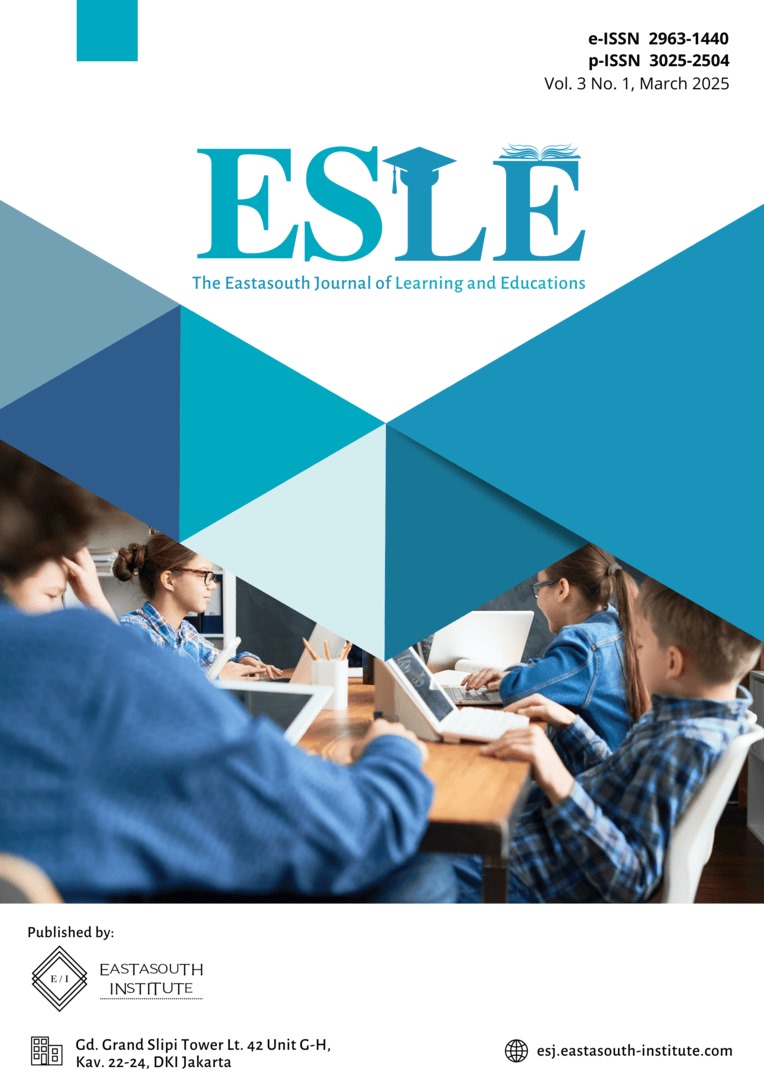Challenges and Opportunities in Education Equity through the 13-Year Compulsory Education Program in Indonesia
Main Article Content
Abstract
The 13-Year Compulsory Education Program in Indonesia aims to equalize educational opportunities and address longstanding disparities in access and quality. This study employs a qualitative approach, gathering insights from six key informants, including policymakers, educators, community leaders, and NGO representatives, to explore the program's challenges and opportunities. Key challenges identified include infrastructure gaps, teacher shortages, socio-economic barriers, and logistical difficulties in archipelagic areas. However, opportunities such as technology integration, public-private partnerships, community engagement, and teacher training offer promising solutions for achieving educational equity. The findings underscore the importance of multi-faceted strategies, collaborative efforts, and targeted policies to overcome barriers and maximize the program's potential.
Article Details

This work is licensed under a Creative Commons Attribution-ShareAlike 4.0 International License.
References
W. Rahman and L. Asha, “The Analysis of the Comparison of the Education System in Indonesia: Perspectives on Gaps and Innovation,” TOFEDU Futur. Educ. J., vol. 3, no. 5, pp. 2009–2016, 2024.
M. Habibi, “Ketimpangan Pembangunan Daerah di Era Otonomi Daerah,” Multiverse Open Multidiscip. J., vol. 3, no. 1, pp. 59–63, 2024.
A. Wahyudiono, “Peran Program Banyuwangi Mengajar Dalam Mengurangi Ketimpangan Akses Pendidikan Dan Dampaknya Terhadap Pembangunan Ekonomi Daerah,” 2024.
A. Azzahra, R. Rahayu, N. S. Marlina, N. Saebah, and W. E. Saputro, “The role of education in economic growth and breaking the chain of poverty in Indonesia,” J. Manag. Econ. Financ., vol. 2, no. 2, pp. 55–63, 2024.
Y. Yusuf, “Pendidikan yang Memerdekakan: Persepektif Freire dan Ki Hajar Dewantara,” Perad. J. Interdiscip. Educ. Res., vol. 2, no. 2, pp. 55–72, 2024.
S. Sukari and S. Sugiyarti, “Mengidentifikasi Isu-isu Pendidikan di Indonesia dan Solusinya,” TSAQOFAH, vol. 4, no. 6, 2024.
I. F. Farkhati, “Social Inequality and Access to Education: Structural Analysis in Indonesia.” OSF, 2024.
Y. A. Tobondo, “Challenges and Solutions in the Implementation of Educational Policies in Indonesia: A Literature Analysis of Merdeka Belajar Kampus Merdeka and Teacher Reform,” EDUKASIA J. Pendidik. dan Pembelajaran, vol. 5, no. 1, pp. 1157–1164, 2024.
Y. Handayani and S. Sukari, “Problematika Sistem Pendidikan di Indonesia,” J. Pendidik. DAN ILMU Sos., vol. 3, no. 1, pp. 168–179, 2025.
M. A. Nugraha and A. Hambali, “Probematics And Challenges Of The Education System In Indonesia,” J. Manaj. Pendidik. Islam Al-Idarah, vol. 8, no. 01, pp. 24–32, 2023.
G. Kalita, “NEP 2020 policies for inclusive education,” Sci. Temper, vol. 15, no. spl-2, 2024.
M. M. Rahaman, M. A. Habib, and M. Wahiduzzaman, “Fostering Inclusive and Effective Education: Insights from Bangladesh,” Teach. World J. Educ. Res., vol. 50, no. 1, pp. 1–5, 2024.
E. V. Fabri, E. D. Brugnera, F. F. Rodrigues, M. F. Nogueira, and M. R. Oliveira, “Cultura Digital E Inclusão: Ampliando O Acesso Ao Conhecimento,” ARACÊ, vol. 6, no. 4, pp. 17688–17703, 2024.
E. S. Animashaun, B. T. Familoni, and N. C. Onyebuchi, “Comparative analysis of inclusive education policies in STEM and general education,” 2024.
M. M. Abdillah, M. Ulum, and L. Judijanto, “Strategi Efektif untuk Mengurangi Kesenjangan Pendidikan: Tinjauan Literatur pada Intervensi Global,” J. Ilm. Edukatif, vol. 10, no. 2, pp. 323–331, 2024.
L. Lin, Z. Li, R. Li, X. Li, and J. Gao, “Diffusion models for time-series applications: a survey,” Front. Inf. Technol. Electron. Eng., vol. 25, no. 1, pp. 19–41, 2024.
N. T. Borgen, H. D. Zachrisson, and A. M. J. Sandsør, “Schools equalizing or exacerbating inequality? Between-school variability in the relationship between socioeconomic background and academic achievement,” 2025.
K. E. KADIO, “Socioeconomic Background, School Quality and Peer Effects in Sub-Saharan Africa,” Sch. Qual. Peer Eff. Sub-Saharan Africa*(January 31, 2025), 2025.
A. Naim, “Equity across the educational spectrum: innovations in educational access crosswise all levels,” in Frontiers in Education, 2025, vol. 9, p. 1499642.
B. Irawan, J. C. Simon, M. Z. Alif, A. R. Saliman, E. Fatmawati, and L. Judijanto, “Addressing Educational Inequality Through Sustainable Policies: an Evaluation from the Education Policy and Sdgs Perspective in Indonesia,” J. Law Sustain. Dev., vol. 12, no. 1, pp. e3152–e3152, 2024.
S. Romlah, A. Imron, Maisyaroh, A. Sunandar, and Z. A. Dami, “A free education policy in Indonesia for equitable access and improvement of the quality of learning,” Cogent Educ., vol. 10, no. 2, p. 2245734, 2023.
H. S. Nabiela and N. Ulfatin, “Inclusive education policy in Indonesia: best practices, challenges, and future directions,” Int. J. Educ. Res. Soc. Sci., vol. 4, no. 6, pp. 1007–1012, 2023.
D. Zhang, X. Li, and J. Xue, “Education inequality between rural and urban areas of the People’s Republic of China, migrants’ children education, and some implications,” Asian Dev. Rev., vol. 32, no. 1, pp. 196–224, 2015.
H. C. Coşkun, “Reflection of the iceberg: Key issues and challenges of education in Balochistan,” Cult. Educ. Futur., vol. 1, no. 1, pp. 47–65, 2023.
F. Sari, “Challenges and Opportunities to Well Education,” TOFEDU Futur. Educ. J., vol. 3, no. 3, pp. 787–792, 2024.
S. Provasnik, “Judicial activism and the origins of parental choice: The court’s role in the institutionalization of compulsory education in the United States, 1891–1925,” Hist. Educ. Q., vol. 46, no. 3, pp. 311–347, 2006.
K. N. Kuteesa, C. U. Akpuokwe, and C. A. Udeh, “Gender equity in education: addressing challenges and promoting opportunities for social empowerment,” Int. J. Appl. Res. Soc. Sci., vol. 6, no. 4, pp. 631–641, 2024.
G. Pirzada, A. Yousaf, and S. Masood, “Issues, Challenges & Opportunities of Education for Marginalized Communities in Pakistan,” Indus J. Soc. Sci., vol. 2, no. 2, pp. 552–564, 2024.
S. Ding, X. Dong, and S. Li, “Women’s employment and family income inequality during China’s economic transition,” Fem. Econ., vol. 15, no. 3, pp. 163–190, 2009.

